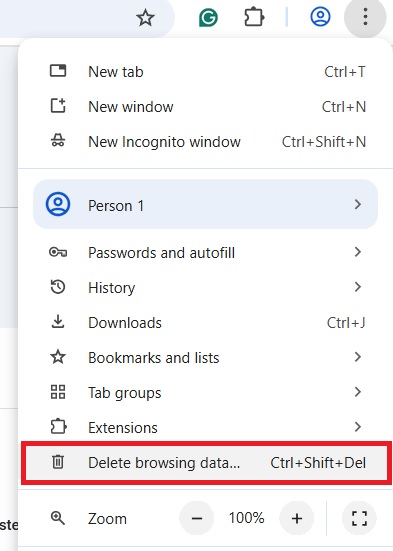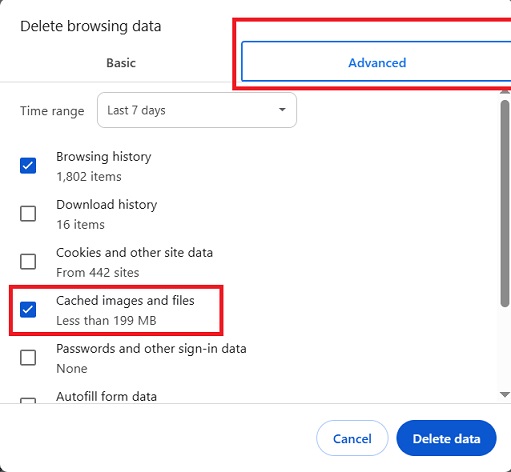How to Fix – Your Connection to this site is not secure
While visiting a website using Google Chrome browser seeing the alert ‘Your Connection to This Site Is Not Secure’ can be disturbing.
This alert often points to problems such as an expired SSL certificate, weak security protocols, or server settings that have not been properly configured. Displayed by major web browsers like Chrome or Firefox, the warning implies that the sites encryption layer falls short, leaving the exchange of passwords, credit card numbers, or personal messages vulnerable to eavesdropping. For site owners, such notifications can scare away visitors, tarnish professional reputation, and drag down rankings in search results. For everyday users, connecting to a flagged page threatens both privacy and digital safety.
In this article, we will unpack the main causes behind the alert-expired certificates, mixed content loading over HTTP, protocol mismatches, and other technical flaws.
Why This Issue Arises?
The warning “Your connection to this site is not secure” usually appears because of a problem with the SSL or TLS certificate, the digital handshake that makes sure data between a visitors browser and the web server travels in an encrypted tunnel. A frequent culprit is an expired or faulty certificate: either the signed window of time has passed or the certificate was produced by a Certificate Authority (CA) that the users device does not recognize. A similar issue arises when the name on the certificate does not match the address being requested-for instance, if the certificate is granted to example.com but the person types www.example.com so the browser starts looking for a secure document under the wrong identity. Because these mismatches raise a red flag about possible eavesdropping or man-in-the-middle attacks, modern browsers display the warning in order to shield users from giving away passwords or other sensitive information.
A second major source of the error stems from poorly configured servers or reliance on outdated security protocols. When a websites server fails to support current encryption standards, such as TLS 1.2 or later, the browser flags the connection as unsafe. The warning can also appear if the site fetches resources-images, scripts, stylesheets-over regular HTTP instead of secured HTTPS, a problem known as mixed content. Both scenarios leave an opening for man-in-the-middle attacks, in which an eavesdropper captures or alters sensitive information. Correcting these weaknesses is therefore essential for protecting users and preserving their trust in online services.
Clear Cache and Browser History
If you’re still experiencing problems on a certain website, your browser may be storing corrupt or out-of-date information in the form of an old cookie, a cached copy of the page, etc. By deleting this information, your browser may load a brand-new copy of the website as if it had never been there before.
Open Google Chrome.
Select Three Dots from the top menu.

Then choose Clear browsing data. Next, pick Advanced from the top menu.

Choose All time under Time range. Select Clear data after checking the boxes next to each item you want to delete. All of the options we’ve listed here, excluding passwords and autofill form data, are ones we advise using.
Check your Antivirus or Disable it
Installing antivirus software is essential if you want to safeguard yourself from internet risks. Although running antivirus is required, occasionally specific antivirus software might interfere with your Internet connection and result in the notice “Your connection is not safe.”
Your antivirus programme may potentially keep you from visiting your preferred websites in addition to this notice. You must first temporarily turn off your antivirus programme so that you can troubleshoot the problem.
Try to view the affected website once again after doing that. If the problem doesn’t show up, your antivirus software was the root of the issue.
Restart Router or Disable VPN Connection
Sometimes your VPN connection might be banned in a particular country, try disabling it. Your router’s malfunction may occasionally cause the notification “Your connection is not secure” to display. You only need to restart your router to resolve such issues.
A simple way to restart your router is as follows:
- Hit the router’s power button (if you have a separate modem and router, you should turn off your modem as well).
- Wait for roughly 30 seconds after shutting off your modem.
- To restart your router/modem, hit the power button one more.
- Watch while the computer boots. Check to see whether the issue is still there after your router has rebooted.
This is a quick and simple fix, but it might not be long-lasting, so you’ll need to do it again if the issue recurs.
Change Date and Time Settings
Incorrect date and time is one of the most frequent reasons of the notice “Your connection is not secure.” Security certificates are used by several websites, and each certificate has an expiration date.
If the time or date on your computer is off, your browser can determine that the necessary certificate is out of date and display this notice.
However, you may quickly resolve the issue by simply adjusting your time and date. You must adhere to these easy procedures in order to accomplish it on Windows 10:
- Adjust the date/time by selecting with the right mouse click on the clock in the bottom right corner.
- The time and date fields will now show up. Disable the automatic time setting option.
- Then, switch this option back on after a little delay. By selecting the Change option instead, you may manually change the time and date.
Restart your browser after changing the date to ensure the issue has been fixed. You can experience issues with time synchronisation or your computer battery if your date and time are again off.
Use Another Web Browser
The Your connection is not secure error might be brought on by a problem with your browser, therefore switching browsers might help. Additionally, we advise using Opera if you want to be secure going forward. If the URL you have requested is on the browser’s blacklist of phishing and malware sites, you will receive a warning.
Only the Opera browser has an integrated VPN that you can turn on with a single mouse click. By encrypting your Internet connection, the VPN function adds an extra degree of protection, instantly hiding your browsing activity from prying eyes. Opera additionally recognises and bans scripts and add-ons that are deemed dangerous, making it secure for financial transactions.
Try Refreshing Web Page or Revisit Later
Try visiting the webpage once more after clearing the website data from your browser. If you continue to get security alerts, the problem is with the website, not your computer or its web browser. You are unable to fix the problem in this instance. You won’t get security alerts while visiting the website when the owner or management of that website fixes the problem.
If you find this article useful, consider sharing it with your Friends and Family. Keep Visiting Digital Gyan, for more Technical News and Updates.

